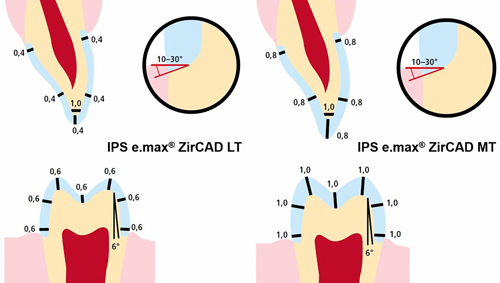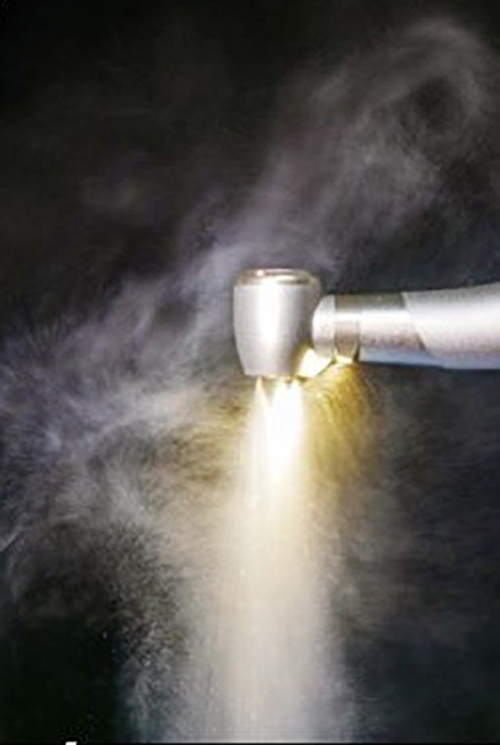By John Garrison, DDS
Achieving a high level of predictability with Class II composite fillings can be a tremendous benefit to the bottom line in any practice. When this procedure can be reliably completed in an efficient manner, it becomes an outstanding revenue generator and a great service to the patient. Whereas composite wear, post-operative sensitivity and inadequate bonding have largely been solved with the wide array of modern materials available to the clinician, utilization of those materials with an antiquated matrix band can lead to an entirely different set of problems. These issues include: Point contacts, friable marginal ridge, food traps, recurrent carries, excessive procedure time and the dreaded “re-do.”
Fortunately, these issues can also be resolved with the correct use of more modern materials. Sectional matrices have been on the market for decades and have experienced their own evolution. Originally designed to aid the clinician in achieving tighter contacts, the newest versions of these have added features that go far beyond the basic contact and address some of the time consuming problems inherent with most matrices. The following case illustrates a typical Class II restoration, but rather than focus on the restorative materials used, the matrix system and accessories will be highlighted to demonstrate how they improve the overall efficiency of the procedure.
(Figure 1)
A radiograph indicated caries on the distal of tooth #28
(Figure 2)
A rubber dam was placed to provide isolation and a FenderWedge was inserted. The FenderWedge performs two functions with Class II procedures. First the metal blade prevents inadvertent bur damage to the adjacent tooth. This is a significant time saver, completely eliminating the need to apply finishing procedures to the adjacent tooth. Additionally, separation of the teeth produced by the wedge simplifies matrix band placement. Sectional matrix bands are very thin and deformation during placement has been a common complaint. The addition of FenderWedge to your technique will save time and frustration.
(Figure 3)
The sectional matrix band was placed and wedged firmly to seal the gingival margin. Care should be taken to select a matrix that most closely approximates the height of the marginal ridge. This will improve the interproximal anatomy and reduce the tendency to over-fill the restoration. The matrix shown here is a Slick Band non-stick matrix from Garrison Dental Solutions. Again, this is a timesaver due to the fact that the non-stick coating eliminates the tendency for bonding agents to adhere to the band.
(Figure 4)
Separator rings were originally designed to provide the additional separation needed to accommodate for the thickness of the band. Modern rings perform this function better than ever but provide added functionality. Ease of separator ring placement and the ability of the ring to remain effectively in place without inadvertent “spring-off” during the procedure is critical to maintaining effective workflow. The ring shown here is Garrison’s 3DXR ring and accomplishes both of these objectives. The other time-saving exclusive feature of the ring is the silicone “padding” on the tips (blue areas). This allows for tip adaptation to a large variety of tooth anatomies securely sealing the buccal and lingual cavosurface margins to the matrix band. The resulting reduction in flash can clearly be seen in the next image.
(Figure 5)
This image shows the restoration immediately after ring and matrix band removal. Notice the lack of buccal and lingual flash and the excellent contact with the adjacent tooth. Very minimal finishing and polishing is needed.
(Figure 6)
The post-op image shows a virtually invisible restoration that will serve this patient for many years.
The use of traditional “Tofflemire-style” matrices may initially seem faster and easier to the clinician. However, when we factor in trimming and polishing large amounts of flash, extra time and effort to achieve any contact, and the occasional need to re-do the restoration, using a sectional matrix system is far more efficient. Incorporating modern matrices into the equation greatly improves the predictability and provides both the patient and clinician what they want: A beautiful tooth-colored restoration with the least amount of chair time.
John Garrison, DDS graduated from the University of Michigan School of Dentistry. He is a member of the Michigan Dental Association, American Dental Association and is a former Grand Master of the Alpha Chapter of DESMOS. He is retired from private practice and is currently one of the partners of Garrison Dental Solutions, LLC.
Photos and dentistry courtesy of David S. Hornbrook, DDS, FAACD, FACE





